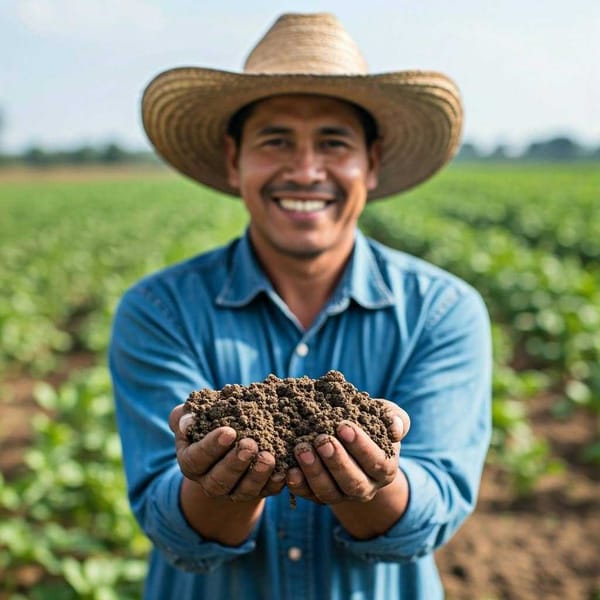Encouraging regeneration of ozone layer recorded
The Northern Hemisphere's Arctic and mid-latitudes are predicted to fully recover by around 2035, followed by the Southern Hemisphere's mid-latitudes by the middle of the century, and the Antarctic region by 2060.

The ozone layer is expected to fully recover in the Arctic and mid-latitudes of the Northern Hemisphere by about 2035, then in the mid-latitudes of the Southern Hemisphere by the middle of the century, and the Antarctic region by 2060.
According to Telma Castro Romero, a member of the Atmospheric Aerosols Group of the UNAM Institute of Atmospheric Sciences and Climate Change, the ozone layer has been recovering at a rate of 1% to 3% per decade in some parts of the stratosphere since 2000. This is based on the most recent scientific assessment of ozone depletion, which was done by the World Meteorological Organization and the United Nations Environment Program.
Thanks to its recovery and the protection it provides against ultraviolet radiation from the Sun, "a high percentage of life as we know it is assured, although we do not know about other phenomena, such as climate change."
Ozone is a gas that is permanently present in the Earth's atmosphere, and its highest concentration is located in the stratosphere. The atmosphere is approximately 100 kilometers high and one way to study it is through the temperature profile; from the surface, at 10 or 12 kilometers, it is called the troposphere; then there is a transition layer and, later, at 15 kilometers, the stratosphere begins.
In the troposphere, the temperature decreases with altitude, but in the stratosphere, there is an inversion and instead of decreasing it increases due to chemical reactions that break bonds of compounds and release heat, particularly that of ozone, and that causes the increase.
Stratospheric ozone forms in the atmosphere when ultraviolet (UV) radiation reaches the lower stratosphere and dissociates oxygen molecules (O2) into atomic oxygen. The latter then rapidly combines with other O2 molecules to form ozone (O3).
This process has been going on for thousands of years and forms a layer that envelops the entire planet. This "shield" absorbs the ultraviolet light coming from the sun and does not allow it to reach the Earth's surface. "If we didn't have that protection, life as we know it would not exist, because of the penetration of all that radiation."
If the ozone runs out, if that "shield" weakens, life would be in danger. And that happened a few years ago, but when the international community realized what was happening, it began to take action.
Warming the atmosphere
In the mid-1970s, at an international scientific conference in London, Professor Frank Sherwood Rowland argued that chlorofluorocarbons (CFCs) used in the past in refrigeration processes and aerosols used in everyday life are chemically stable products and that over time they change little, so they had to accumulate somewhere.
Along with his colleague and student, Mario Molina Pasquel y Henriquez, Rowland was responsible for analyzing and discovering that in the stratosphere was that accumulation. They made a model and began to alert the scientific community, and, above all, the Mexican chemist took on the task of convincing the scientific community and decision-makers that there was a problem. This was corroborated by satellites, especially at the South Pole, in the 1980s, and for this finding, he and Paul Crutzen received the Nobel Prize in Chemistry in 1995.
The widespread use of CFCs considerably damaged the ozone layer surrounding the Earth's atmosphere, leading to the formation of the hole still present.
Observations made in 2019 by NASA and NOAA researchers who detect and measure the growth and breakdown of the "ozone hole" with instruments aboard the Aura, Suomi-NPP, and NOAA-20 satellites, comment that it was then 9.3 million square kilometers, smaller than the maximum reported in 1998 when it measured 25.9 million square kilometers. "What we call the 'hole' is a thinning of the ozone layer in the stratosphere over Antarctica that begins every September," says the expert.
The Montreal Protocol was signed by 197 countries in 1987 and came into force in 1989; by signing it, nations committed themselves to reduce emissions of CFCs, which were replaced by hydrofluorocarbons (HFCs), which do not damage the ozone layer but are compounds that warm the atmosphere.
A global problem was solved: the ozone layer regenerates. However, it was achieved with elements that now affect the Earth's climate, along with other greenhouse gases such as carbon dioxide and methane. So, on October 15, 2016, the Kigali Amendment to that protocol was put into place. This is an international agreement to cut down on the use and production of HFCs.
HFCs emitted in industrial processes, refrigeration, and consumer goods have a high content of so-called halogens, which mainly include chlorine and bromine, and halocarbons they possess, which have a small impact on ozone destruction. However, they are greenhouse gases with a great potential for global warming and are harmful to the environment.
The importance of doing research and improving technologies
Mexico was one of the first countries to sign the Montreal Protocol and the first to ratify it. According to the Ministry of Environment and Natural Resources, Mexico "has developed more than 100 projects in the sectors of industrial and domestic refrigeration; foams; aerosols; centrifugal cooling systems; halons; technical assistance and training, among others, to reduce its consumption of ozone-depleting substances, and today all domestic and commercial refrigerants and aerosol products produced in Mexico are free of CFCs."
What we do to protect and improve the environment, "applying common sense, such as not generating so much garbage, stopping using the car, etc.", will benefit the conservation of our planet, which for now is our only home to preserve life as we know it.
We must keep in mind that the Earth's natural processes are interconnected in one way or another, and that breaking this balance will always have small or large consequences. As a result, wherever we are, we must take care of our home from various spheres, jobs, and activities. "We are all responsible for what is happening. There are solutions; young people, especially, have a lot to do, and they must be supported by the experiences of adults, so as not to make the same mistakes of the past, "concludes Telma Castro.




